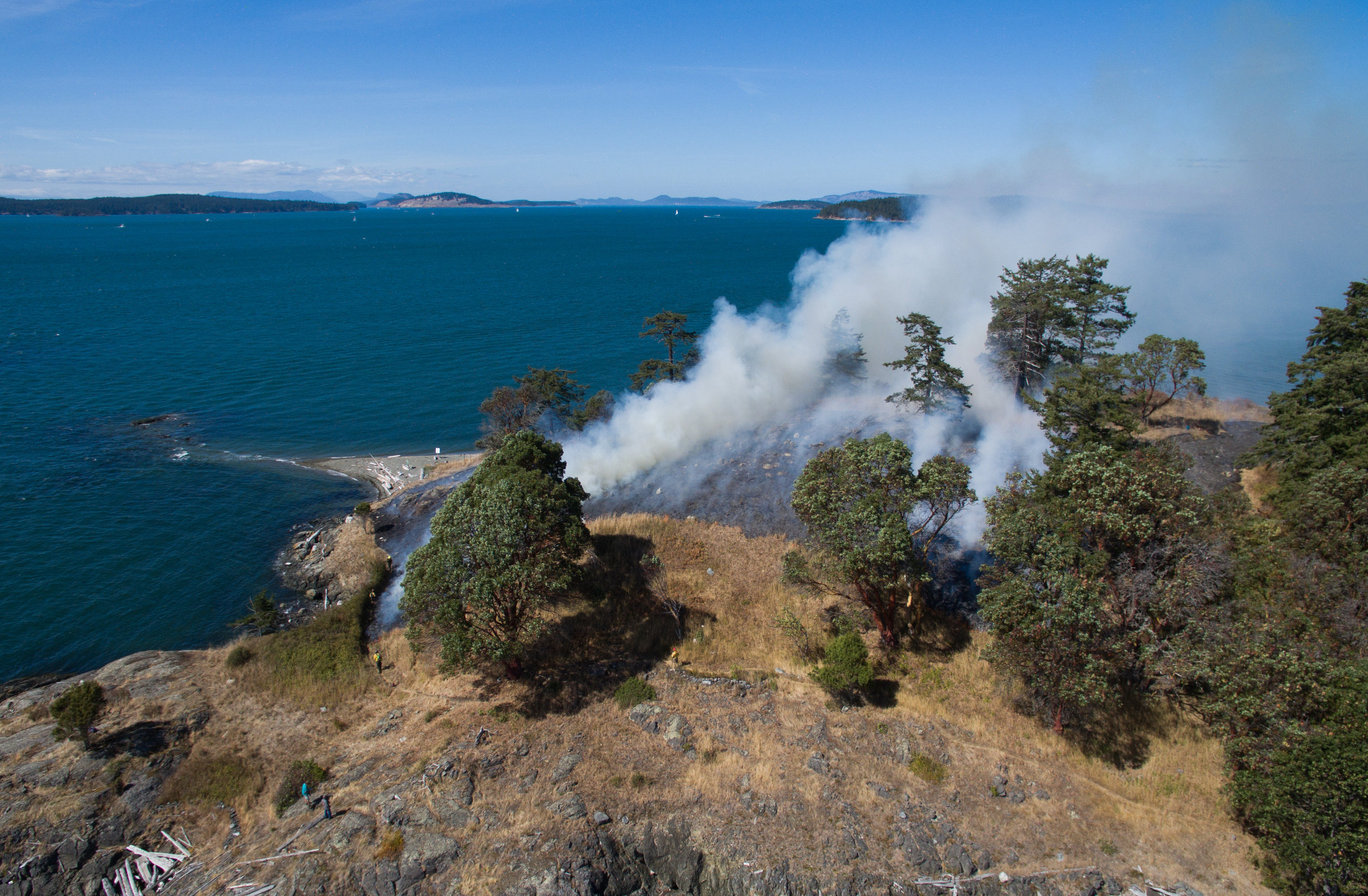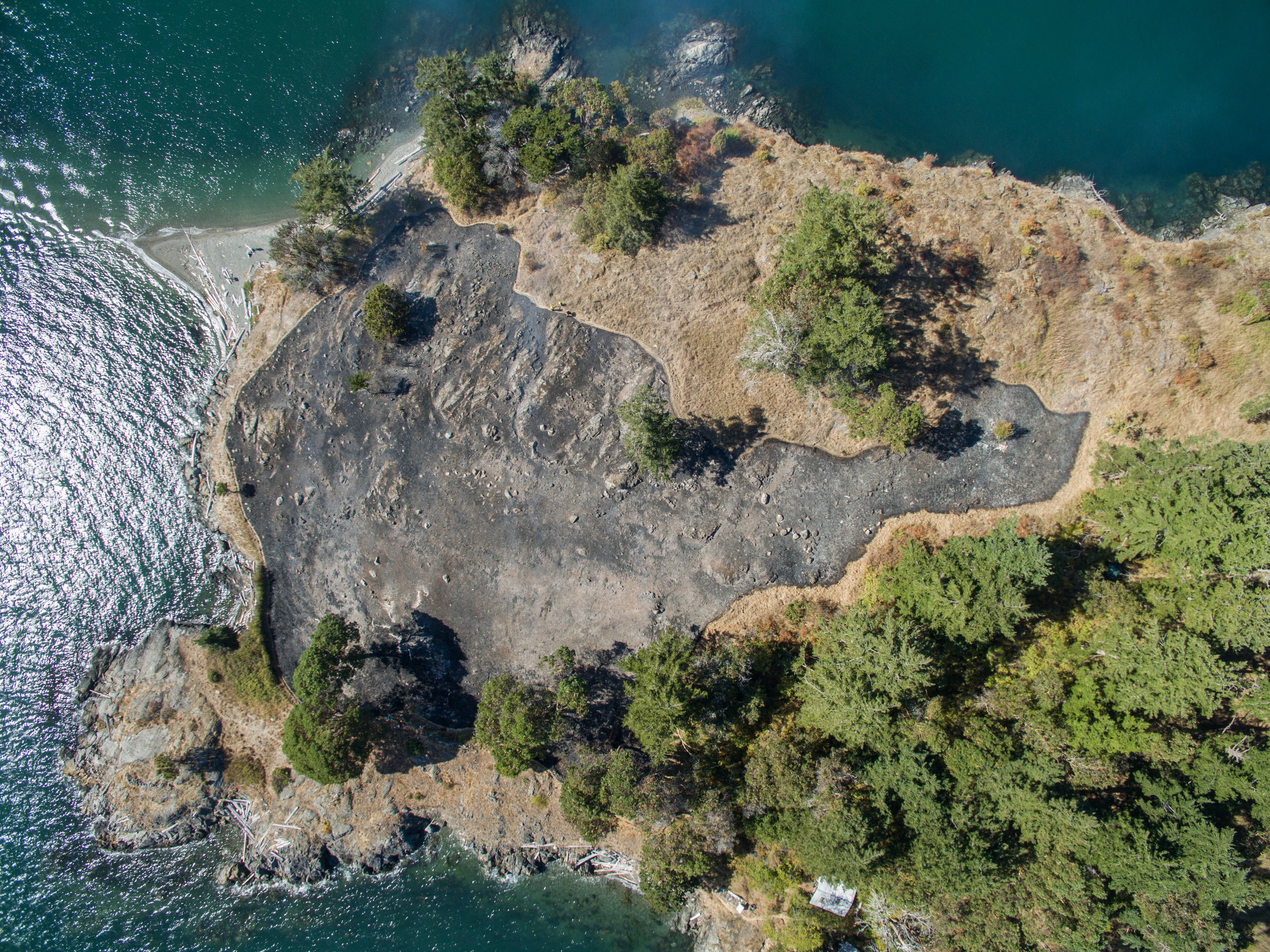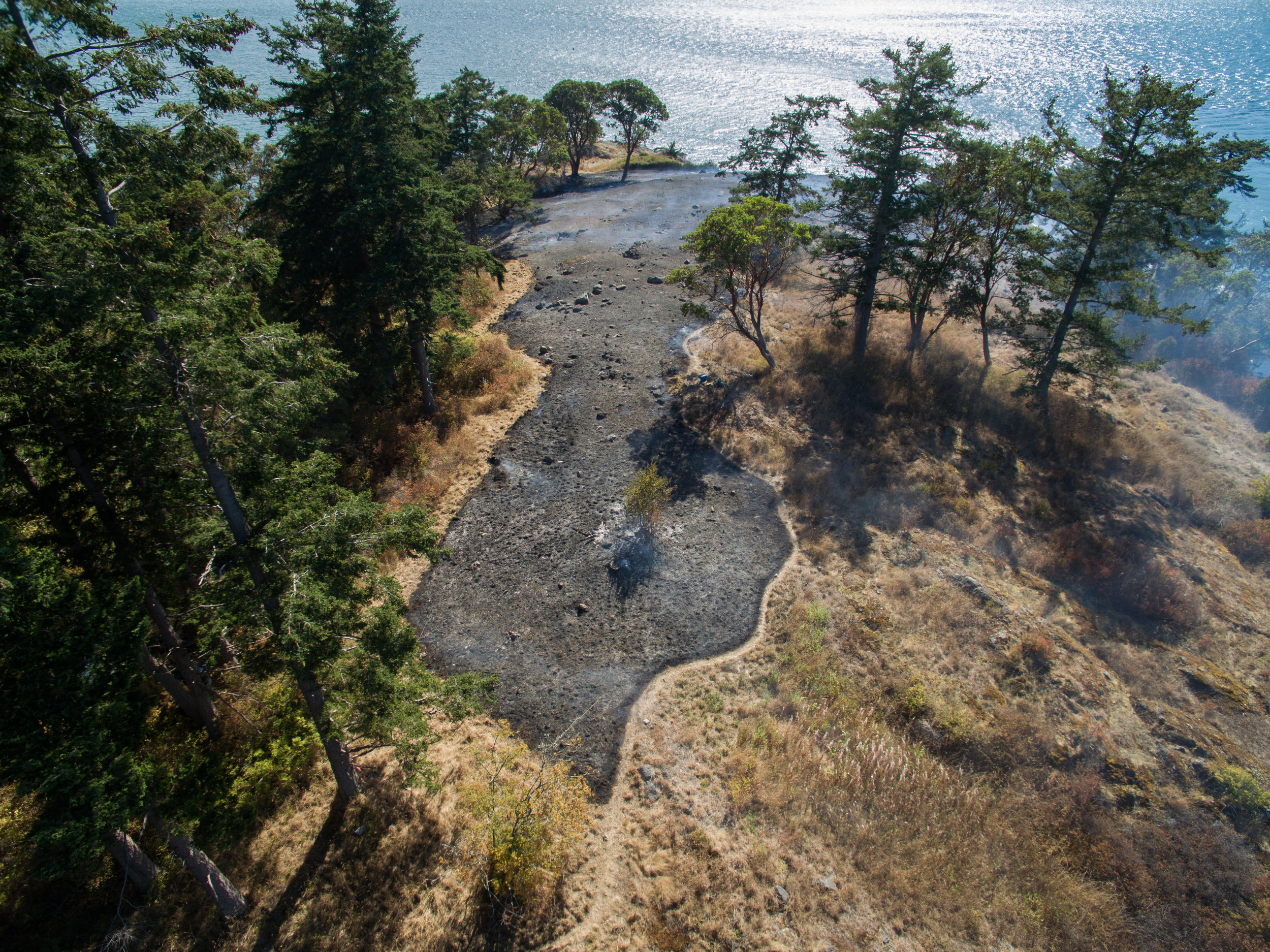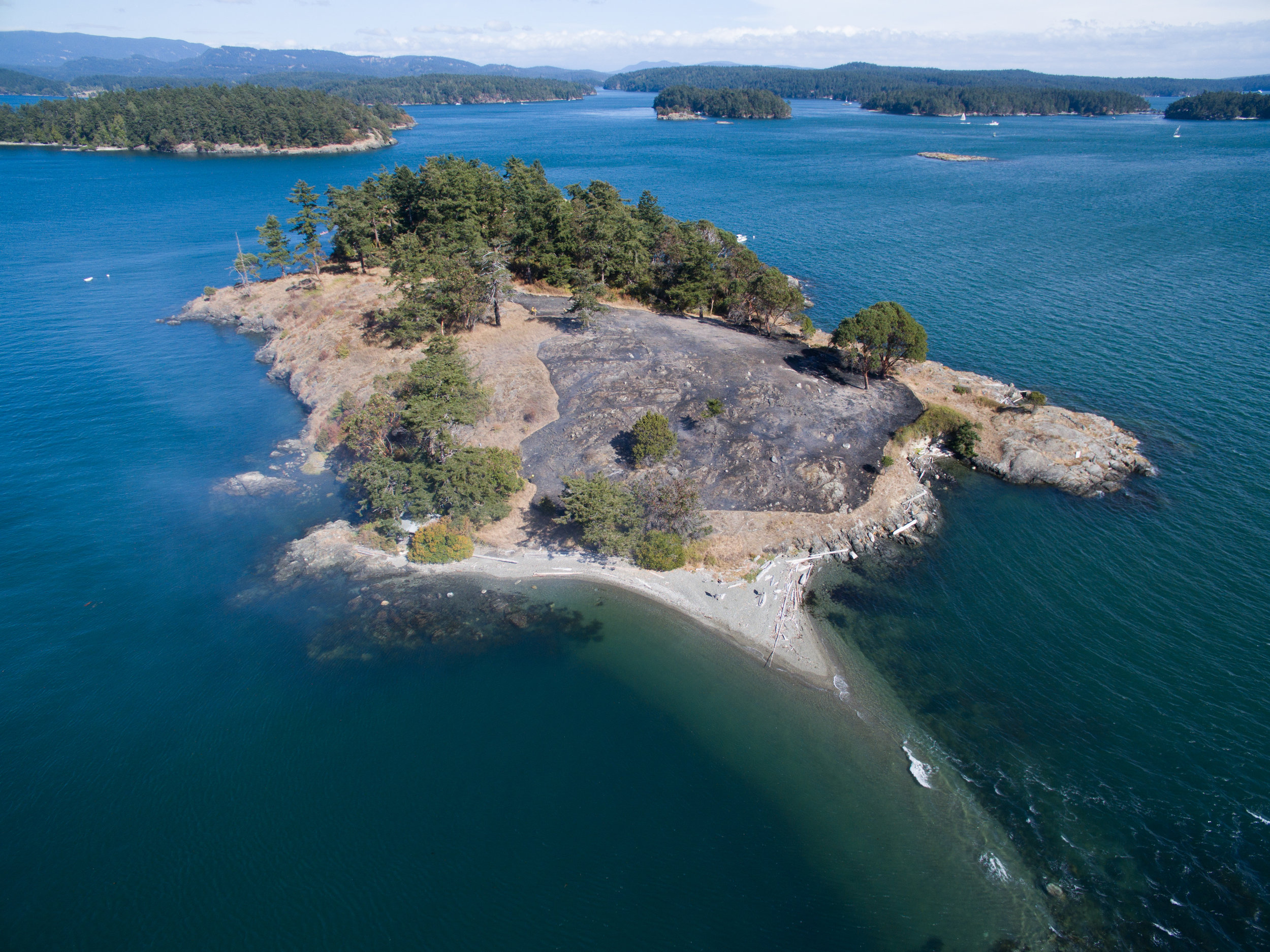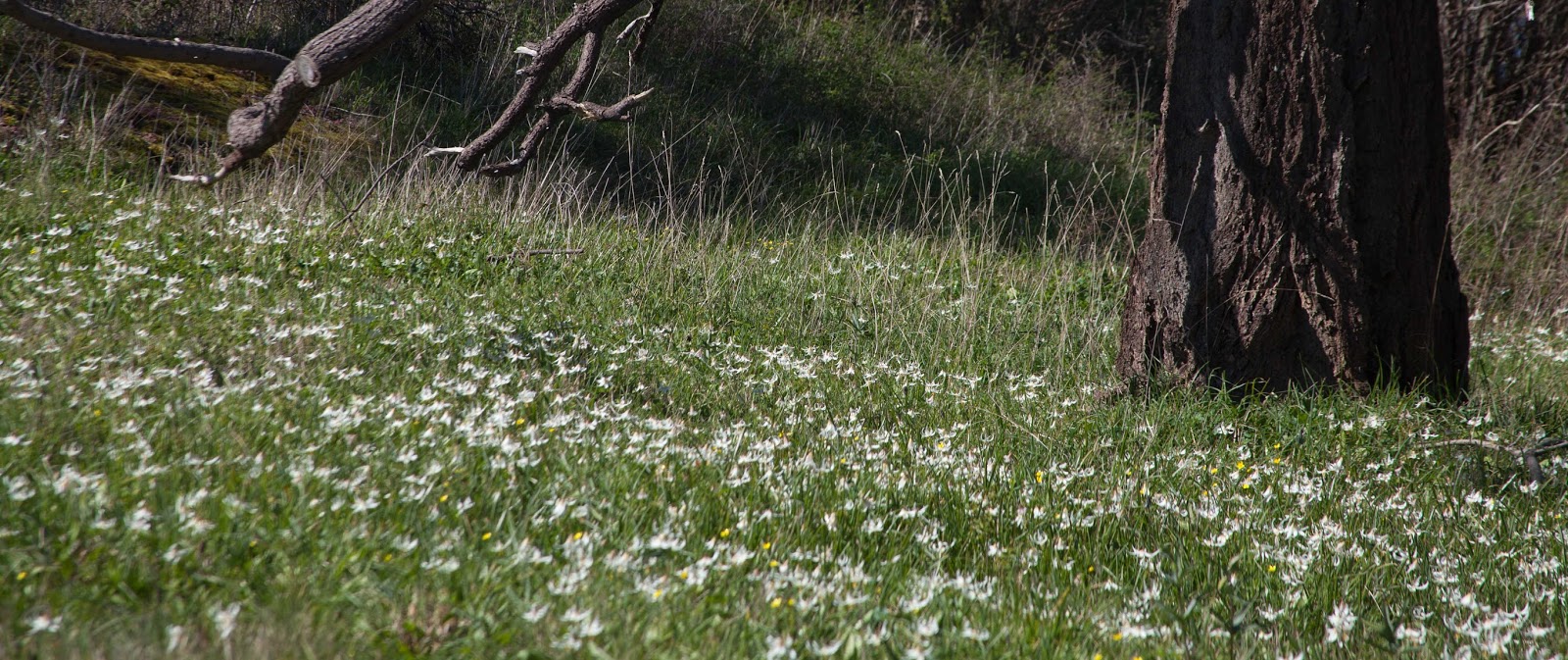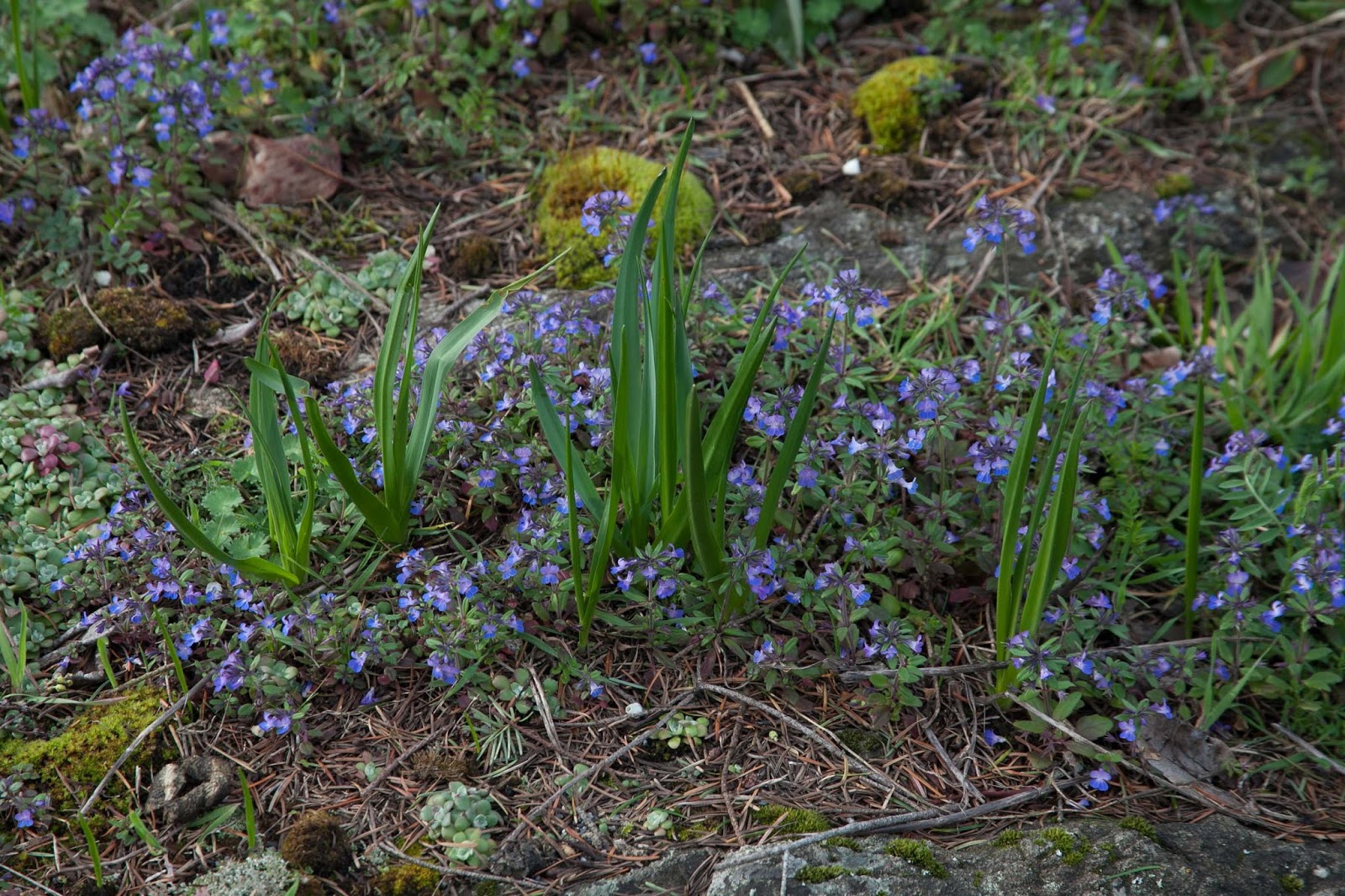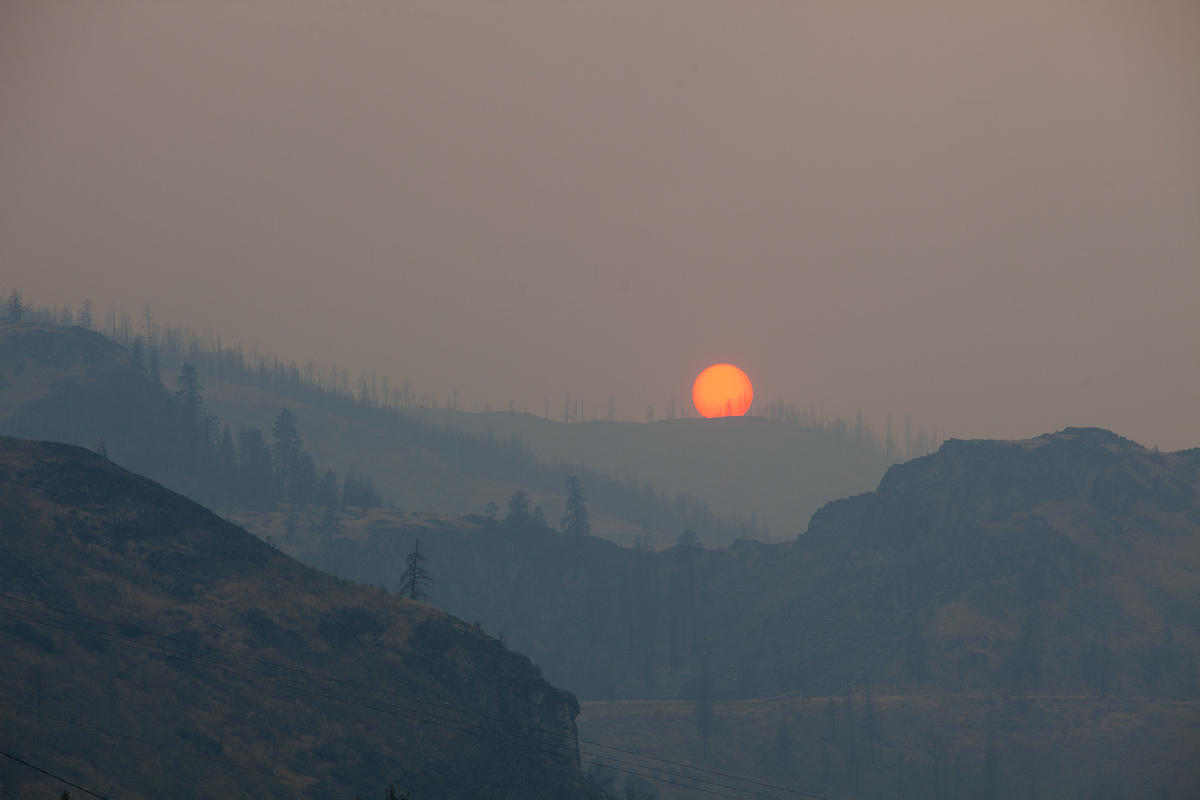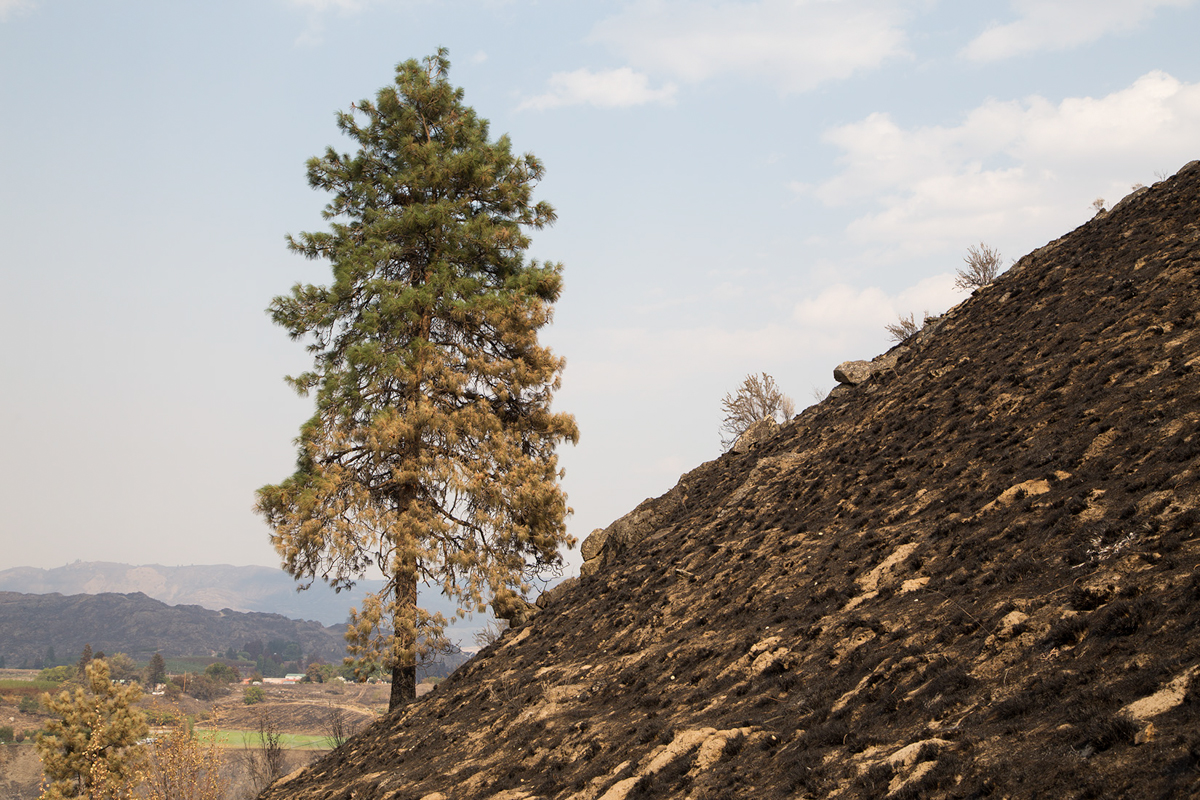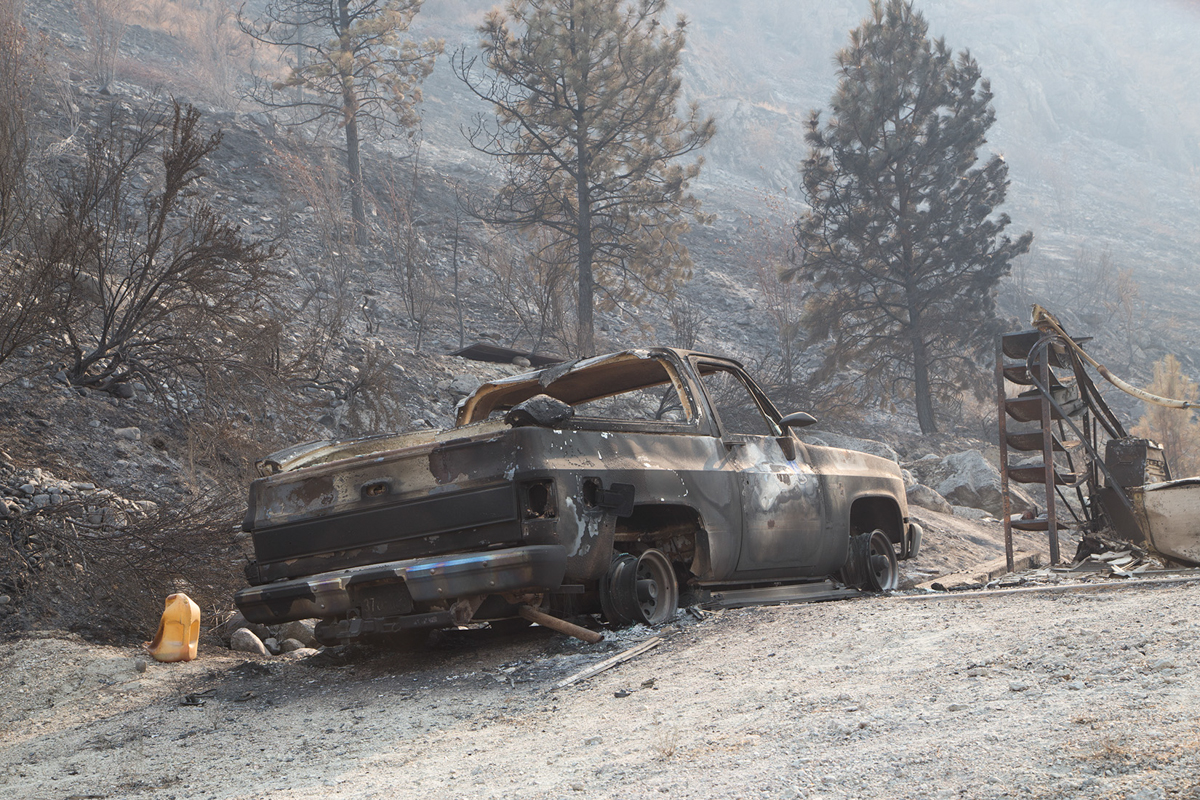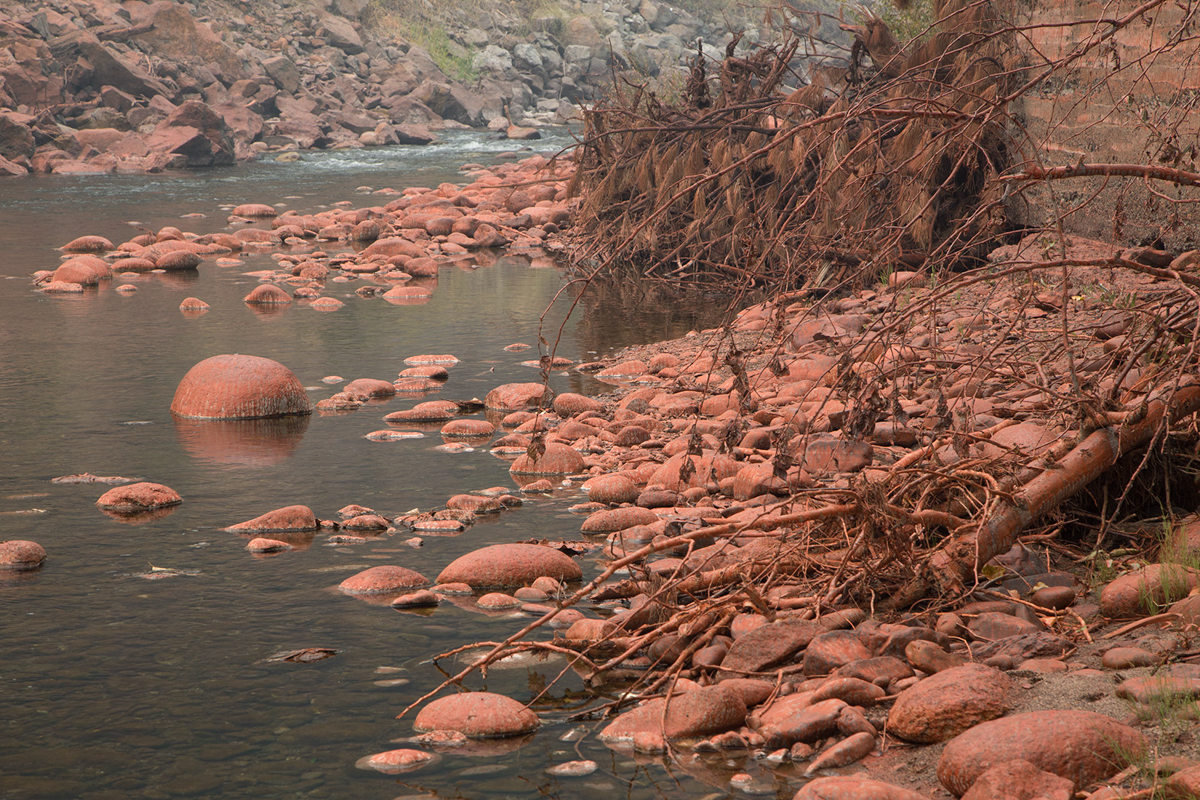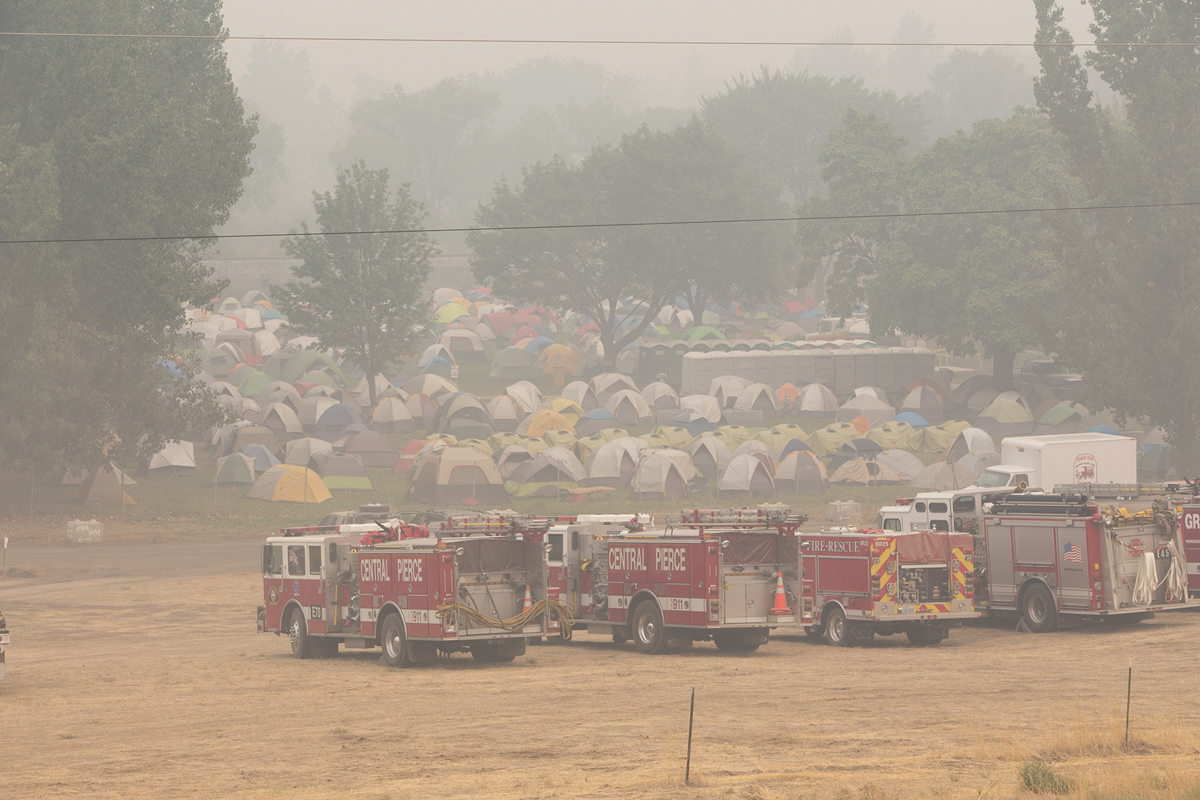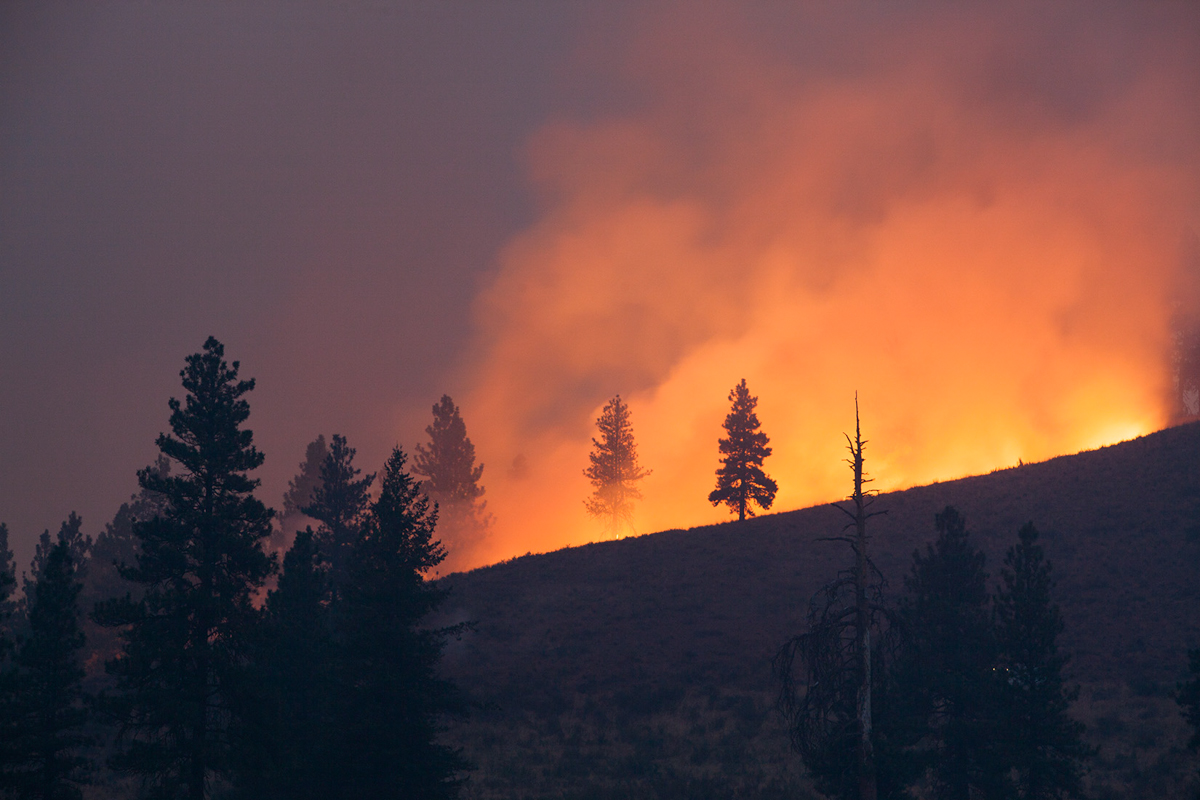the 2021 Cascadia Prescribed Fire Training Exchange (TREX), which is designed to increase shared stewardship and learning across agencies and local landowners, kicks off soon in Kittitas County.
Innovative Prescribed Fire Training Comes to NE Washington for First Time
Bringing Fire Back onto the Quinault Indian Nation
Story and photos by Adam Martin, Prairie Restoration Specialist, Center for Natural Lands Management
With the roar of the Pacific Ocean in earshot, Moses Prairie was set on fire by the Quinault Indian Nation for the first time since the 1800s. This 200-acre prairie is one fragment of the once more extensive coastal prairies found along the Olympic coast.
Lots of time, and many hands went into preparing the late-September burn. They set out a wide mow line, and laid out hundreds of feet of hose to support the burn. No engines or UTV’s were used, just bladder bags, flappers, and drip torches. Not as original as the friction fire burns that likely started the original fires on the prairie, but a far cry from the machine and technology heavy prescribed fires of modern times.
The burn was one project under the Washington Coast Restoration Initiative, a state-funded program created by The Nature Conservancy for communities on the coast to do on-the-ground work to improve land management. In the past, Quinault used fire to encourage desired plants and wildlife in the prairie landscape. With this project, they’re using traditional practices such as fire on Moses Prairie to improve production of berries, roots, bulbs and plants for basket-weaving materials, and stimulate the wetland prairie for wildlife such as ducks, geese, butterflies, bear and elk.
A group of us from the Center for Natural Lands Management traveled out to support their burn operations, and get the opportunity to burn a prairie completely different than the dry gravelly outwash prairies in the South Sound. As we circled up with the Quinault burn crew; tribal members, and elders, our boots wet as our weight began to make the ground seep, we shared and listened to stories about the place we were about to burn. The elders imparted the importance of communication. Communication is what allowed for us all to be there in that moment, having an intention to get something done, and listening, talking, and sharing a common vision. It was fitting words for what we were about to do.
Bob, our burn boss, brought a piece of pitch wood of longleaf pine, the foundation tree of the south, where he burns in the winter season. We used it to start the prescribed burn an old way; no burn mix, just fire and pitchy wood. It was a small gesture, bringing some of the fire from the south; where this history of ecological burning has been long and continuous. We hoped some of the flame of Southern fire would help again start a long legacy of fire that is the right of the people who have lived in these wet mossy forests and prairies the longest.
The fire itself was text-book and short; maybe an hour. We did our best to let everybody get an experience putting fire on the ground. The slough sedge and Labrador tea burned well, bog gentian and sundew remained flowering after the burn, the wet and boggy nature of Moses prairie gave us a gentle entry into burning this landscape again. Hopefully the elk will again forage in the new growth in a few weeks. The steady coastal winds made ignitions feel mostly like sailing. The smoke came together and went up high and into the upper winds. Everybody was smiling.
For many from the Quinault crew it was their first or second prescribed burn, and the feeling of joy was palpable when we again circled up at the end of the burn. Fire is one of the quickest ways to bring people together. For us at CNLM we get the privilege to burn almost every day in the summer, and many of has have been for many years. The opportunity to again feel the excitement of burning for the first time was a great gift to receive and share.
And helping to peel back a layer of colonization that happened on this landscape, while small, made it all the more potent.
The Nature Conservancy created the Washington Coast Restoration Initiative and supports it in the Legislature. We work with the Quinault Indian Nation and Center for Natural Lands Management on many projects.
Putting Fire to Work in Washington
Photographed by John Marshall
Eastern Washington’s dry forests have evolved with and depend on regular, low-intensity fire to thrive.
Washington's recent string of record-breaking wildfire seasons is spurring a call to action to develop and implement an overarching strategy to restore healthy forests that are resilient to routine, low-intensity wildfires.
To protect communities and timber resources, we have been aggressively suppressing wildfire for over 100 years, and today, large portions of our forests are unnaturally dense with high levels of forest fuels, and less able to resist insects, disease and severe fire. When wildfire does break out, these unhealthy forest conditions increase the likelihood of catastrophic fires that threaten lives and homes.
One tool in restoring forests to be more resilient to this kind of fire is the use of controlled burns, or prescribed fire, to reduce the fuel load and return forests to a more natural fire cycle.
In the spring of 2016, the Washington State Legislature passed House Bill 2928, the Forest Resiliency Burning Pilot project. This pilot is examining the role of controlled burns in creating healthier, more resilient forests.
More details about the project are here: Put Fire to Work
The Okanogan-Wenatchee National Forest is working with partners now to implement a series of controlled burns across about 8,000 acres under the pilot project. The Conservancy is supporting this work. Participants in this pilot include the Washington Department of Natural Resources, Washington Department of Fish & Wildlife, Tapash Sustainable Forest Collaborative, North Central Washington Forest Health Collaborative, Northeast Washington Forestry Coalition, and Washington Prescribed Fire Council.
Hot Topic: Wildfires and Wildlife
With the onset of climate change and growing human populations, more people are severely impacted by wildfires. But humans aren’t alone in losing their homes to wildfires—animals are also at risk.
Join our forest ecologist Ryan Haugo along with other wildlife and fire experts for a conversation about Washington’s increasingly hot landscape and the animals within struggling to survive.
Tuesday, Oct. 4
Naked City Brewery
8564 Greenwood Ave. N.
7 p.m.
Note this is a 21 and over event.
Panelists include:
· Paul Hessburg, Research Landscape Ecologist, USDA-Forest Service
· Ryan Haugo, Senior Forest Ecologist, The Nature Conservancy
· Jim Watson, Wildlife Research Scientist, Washington Department of Fish and Wildlife
Moderated by Fred Koontz, Vice President of Field Conservation, Woodland Park Zoo
Space is limited! Click here to register.
Living in the Era of Megafires
Written by Reese Lolley, Director of Forest Restoration and Fire
Photo credit: John Marshall
New Showing Added Oct. 28 - Cle Elum Senior Center - 6:30 p.m. - Free
Megafires and the destruction caused by them is a serious and growing issue to our region. Our communities, homes, businesses and our very way of life are threatened. If we are going to make effective progress towards increasing fire resiliency, we must increase awareness and stimulate conversation about this important issue across all levels of society.
The Wildfire Project is a 60-minute, multi-media, traveling presentation hosted by Dr. Paul Hessburg (Pacific Northwest Research Station and the University of Washington), who has conducted fire and landscape ecology research for more than 27 years. The presented material comes in the form of fast-moving, short, topic-based talks interspersed with compelling video vignettes and features the work of wildfire photographer, John Marshall. The videos are being created by award-winning documentary film company, North 40 Productions, of Wenatchee,
Upcoming tour dates include:
October 28: Cle Elum, WA: 6:30 p.m. at Putnam Centennial Center (senior center) - hosted by Tapash Sustainable Forest Collaborative, U.S. Forest Service, Washington Resource Conservation and Development Council, Washington DNR
Learn more about the project here
When Fire Comes Close
Written by Hilary Lundgren, Director of Chumstick Wildfire Stewardship Coalition (CWSC)
Photographed by Brain Shurgrue
Saturday afternoon, I was sitting on my porch editing a community After the Fire Resource guide. As I was just about to hit save and shut down the computer to join my family on a camping trip, when my neighbor yelled “What’s up with the flames over the road?” Within a few seconds, I received a call from a friend who moved to town last week asking “Do we need to be worried about smoke? What do we do? Is this normal?” After a quick call to Chelan County Fire District 3 (CCFD3), it was clear that things were “not good.” Homes were being threatened. Early in my career, I spent time digging fireline, working on an engine, and spraying water, i.e., working on the landscape. In this ‘new’ position with the Coalition and as a member of the Fire Adapted Community (FAC) Learning Network, I'd been working with the community. My time and energy has been dedicated to helping to prepare our homes, landscapes, families, and businesses for the inevitable. I had never worked so closely with a community of individuals where life as we know it could change with one ember. Honestly, the moment that I heard that ‘it’ was happening, I froze. And then I cried.
Now what? Were we ready? Was I ready?
We had done our work before the fire. It was now time to trust the work of the landowners--and begin our during the fire work. I took a deep breath, collected myself, packed up my computer and headed down to the station.
When I arrived, the CCFD3 Auxiliary was in full force: answering phones, preparing food for the firefighters, and sharing information. The power was out for many Chumstick area residents and the cell tower had burnt down, so those who lost phone service (which was a significant population of Leavenworth area residents and visitors) were desperate for information. As residents called or stopped by the station, we signed them up for the Chelan County Emergency Alert registry to be notified via text, voicemail, or email of any evacuation or shelter in place notices. (Residents were still able to receive texts.)We shared Incident Management Team and Emergency Management notifications and fire status updates on social media to keep our community informed. As the evening came to a close, the winds died down and fire behavior changed.
On Sunday morning the community was still on high alert and still seeking any type of information. The CWSC took an opportunity to distribute Chelan County Special Needs Registry sign-up forms (the registry allows emergency responders to identify and notify those who may require additional assistance of potential risks and notices during a disaster), evacuation guides, and evacuation level notices (all forms in English & Spanish) at local area churches and the Red Cross temporary shelter. At each stop, at least one person knew someone who would benefit from registering with the County’s Registry. Many of the pastors and priests also service areas outside of the Leavenworth area (Peshastin, Monitor, Cashmere, Wenatchee) and were able to distribute informational materials to Hispanic communities and with rural congregations.
While smoke was in the air, CWSC began to receive calls and photos from landowners who were immediately taking action to reduce their risk. Residents were raking pine needles off of their roof, cleaning gutters, and removing fuels from around their home. (They wanted to know when CWSC, in partnership with the Washington Department of Natural Resources, would be offering a Fuel Reduction and Chipping cost-share program!)
As the fire moved away from homes and into forested areas, the community began to feel a sense of relief. CWSC worked with CCFD3 to distribute After the Fire door hangers (created by FAC Learning Network members) that include post-fire watch-out situations and recovery resources. The Incident Management Team hosted a community meeting where they shared the progress of their efforts. The number of organizations and fire-centric entities and organizations present at the meeting (US Forest Service, Washington Department of Natural Resources, NOAA, CCFD3 and Auxiliary members, National Weather Service, Burlington Nothern Railway, Red Cross, Chelan County Public Utility District, Cascadia Conservation District, Chelan-Douglas Health District, Chelan County Roads Department, as well as many others) demonstrated the success of interagency coordination. The CCFD3 Chief, Kelly O’Brien, noted that in his 20+ year career he has never had an incident run so smoothly. Residents were given many accolades for doing their work – preparing their home and landscape – but above all creating a space for response entities to do their job safely and effectively.
At the meeting, CWSC and Cascadia Conservation District were able to share After the Fire resource guides and informational pamphlets generated by the FAC Learning Network and NOAA (and even a few pages from the draft Leavenworth area After the Fire Resource Guide that we were working on when the fire broke out…). CWSC took the opportunity to remind residents that the work is not over. Even though the flames were not at our door-step, a change in weather conditions in combination with the changed landscape still poses a risk (unstable slopes, debris flows, and falling trees are potential post-fire considerations). The CWSC also stressed the importance of contacting insurance agents to verify flood insurance policies.
As I reflect over the last few days, the principals of the prescribed fire 4 Rights Campaign launched by the Bureau of Indian Affairs Pacific Region (shared by a fellow Fire Adapted Communities Learning Network member) keep coming to mind. The 4 rights, Right People, Right Place, Right Time, and Right Choice, can easily be translated to the success of this wildfire incident:
Interagency and community organization coordination, communication, and support resulted in safe and effective response; firefighters from CCFD3 and other local fire districts were prepared and well trained; the CWSC’s connections with partners has allowed us to share information faster and support those seeking assistance (right people). Work of the residents created a landscape to reduce the risk of wildfire to their homes and create defensible space for firefighters (right place). Weather conditions played a significant role in fire behavior and allowed fire fighters to conduct burnout operations resulting in a low-moderate severity burn (right time). Individuals who have taken steps to prepare themselves, their organizations, and community are leading the path toward becoming a truly fire adapted community (Right Choice).
Yesterday it rained. Today the weather is cool and clouds are in the air. Firefighters are packing their tools and refueling their engines and their bodies for the next incident. The plume has turned into a few puffs of smoke. Organizations are assessing the post fire impacts on the landscape and to homeowners. With each conversation and each action, we will learn, we will share, and we will continue to prepare. Maybe next time I won’t cry.
The Chumstick Coalition is the Washington host site of National Fire Adapted Communities Learning Network and Member of Washington State Fire Adapted Communities Learning Network which are working to engage communities across the Nation and in Washington to take actions to share how they are reducing their risk before, during and after wildfire.
Learn more about the Chumstick Coalition
Controlled Burn on Yellow Island
Photos & video by Chris Teren
The Nature Conservancy’s Yellow Island lies between Orcas and San Juan Islands in the Puget Sound. For the last 30 years, this 11-acre island has been the site of extensive research and repeated controlled burning to help maintain the diversity of species that require frequent fires to survive in healthy Puget Sound prairies.
This year, for the first time, we had a new dimension to this ongoing research. Volunteer Chris Teren brought in his drone photography and video skills to help document the burn. Watch his drone video below.
It’s important to note that Chris worked closely with our team, including Island steward Phil Green and the fire team from Center for Natural Lands Management, to safely document this event. Drones have posed real safety hazards to crews fighting wildfires and house fires in Washington, and no one should ever send a drone in to a fire when it’s not part of a planned exercise.
Read more about the use of prescribed fire on Yellow Island here.
See more of Chris Teren’s photography here:
What Not To Do When a Wildfire Threatens Your Home
Written by Patricia Sarmiento, Volunteer writer
Photograph by John Marshall
Emotions run high when disaster strikes. That’s why it’s important to educate yourself on disaster preparedness and make plans for what you’ll do during a wildfire before one ever comes your way.
There’s a few do’s and don’ts of reacting to an emergency wildfire situation. Many of us already know the do’s, so here’s a reminder of what you shouldn’t do during a wildfire.
Don’t Assume Everyone’s Clued In
Call 911 immediately–don’t assume someone else already has. Don’t assume your neighbors and local loved ones know about the wildfire breakout, especially if they’re at work or school in another area. Notify everyone of the potential danger.
Go ahead and get in touch with everyone in your family so you can talk about setting your wildfire action plan into motion.
Don’t Leave Your Home without Taking a Few Precautions
Unless you need to leave your home as soon as possible, go ahead and beef up your home’s ability to withstand a nearby fire by taking a few precautions such as:
Removing debris, yard waste, and firewood from your yard
Distancing your grill from your home
Shutting off all gas and propane suppliers
Closing windows, vents, and doors
But remember–lives are always more precious than things. If you feel unsafe while preparing your home for a nearby wildfire, leave immediately.
Don’t Wait to Take Action
Before you take precautions for protecting your home, know what your criteria are for deciding to evacuate. At what point will you know that it’s time to pack up and go?
Having this criteria in mind before you put your home-preparedness plans in motion will help keep you focused during times of panic. Know when you need to drop what you’re doing and get out and don’t be afraid to leave earlier than planned if you feel unsafe.
Don’t Return to Your Home without Permission
If you do evacuate, be prepared to leave for good, or at least for an extended period of time. Don’t return to your home without checking in with the proper authorities first. Don’t assume your neighborhood is safe again when there’s a possibility it might not be.
This is why it’s a good idea to keep a battery-powered radio in your emergency wildfire kit. You’ll be able to tune into the news and stay updated on the status of the wildfire.
Hopefully you’ll never need to use these disaster plans–but if a wildfire ever strikes, you’ll be glad you made them. Remember that when it comes to wildfires and other natural disasters, a detailed plan can be the most powerful tool in your toolkit.
Patricia Sarmiento loves swimming and running. She channels her love of fitness and wellness into blogging about health and health-related topics. She played sports in high school and college and continues to make living an active lifestyle a goal for her and her family. She lives with her husband, two children, and their shih tzu in Maryland.
IN THE NEWS ON FIRE
Photography by John Marshall
Once again our state has set a grim record. For the second summer in a row, we are experiencing the largest wildfire in our state’s history. Nearly 1 million acres have burned, hundreds of homes have been lost, and, most devastating, three firefighters lost their lives fighting the blazes that blanket North Central Washington.
Read our Board Chair Byron Bishop’s guest opinion column about actions we can take now to reduce the threat. It appeared in the Seattle Times, Sunday, Sept. 6
The Conservancy has been advocating for and working on strategies to improve our resilience to these megafires.
Here’s a roundup of recent news coverage:
Seattle Times, Nov. 9: Legislature needs to provide the funding to pre-empt wildfires
Seattle Times editorial on the need for Legislative funding for fire solutions
Seattle Times, Nov. 9: Congress needs to address wildfires like any other disaster
Seattle Times editorial in support of the Wildfire Disaster Funding Act, which is a Nature Conservancy priority for Congress. It would bring funding stability to the Forest Service, which has to spend money designated for improvements on fighting fires.
KING-TV, Oct. 15: Forest restored to pre-wildfire condition
KING TV’s new environmental reporter, Alison Morrow, did a feature story on the collaborative restoration project at Oak Creek Wildlife Area, designed to make the forest more resilient in the face of wildfire.
Seattle Times, Oct. 11: Fighting Fire With Fire
Front-page storyon the importance of controlled burning in fighting wildfire, and the barriers to getting more done in Washington:
“We have a set of regulations that are fairly outdated,” said Reese Lolley, director of the Nature Conservancy’s Eastern Washington Forest Program. “More and more, I think we are looking at how do we better live with fire, and how do we use it as a tool.”
Our forest scientists played a critical role in helping the reporters develop the story.
The Olympian, Sept. 27: Dramatic climate shifts require attention to forests, water
Guest opinion column by Washington State Director Mike Stevens and Public Lands Commissioner Peter Goldmark.
Wenatchee World, Aug. 30: Preparing for the next megafire
“The federal and state agencies, local government, and stakeholders through groups like the Nature Conservancy and the North Central Washington Forest Health Collaborative, know what to do and are ready to go.”
Tri-City Herald, Aug. 28: Wildfires should have natural disaster status
“Federal Agencies have run short of wildfire suppression money eight times since 2002, according to The Nature Conservancy in Washington State.”
Seattle Times, Aug. 26: Why we have such large wildfires this summer
“Analysis by the Nature Conservancy and U.S. Forest Service found that about 30 percent (2.7 million acres) of Eastern Washington federal, state, tribal and private forestland needs some kind of thinning or treatment to reduce the risk of wildfire. That could include cutting smaller trees or using planned fires to thin the forest.”
Wenatchee World, Aug. 19: We burn, but we have initiative
“‘We need to be proactive in reducing these hazardous fuels,’ said Lloyd McGee of the Nature Conservancy. That requires controlled burns and mechanical treatment.”
Yakima Herald, Aug. 19: New tools needed to improve wildfire prevention
“Collaborative efforts between the state, the Forest Service and the Yakama Nation at thinning fuel and restoring forest health have reduced fire risks, said Mary Sutton Carruthers, coordinator of the Tapash Sustainable Forest Collaborative.”
Wenatchee World, Aug. 18: Leaders search for solutions for wildfire management
“‘We’re fighting a war. To win a war sometime we have to learn how to live with the enemy,’ said Lloyd McGee, Eastern Washington Forests Program manager for The Nature Conservancy.”
Yakima Herald, Aug. 6: Advocating for the Wildfire Disaster Funding Act
“‘We’re going to fight these fires and pay for them one way or another, but this sets up a more rational way of funding that doesn’t impact other programs,’ said Cathy Baker, governmental relations director for The Nature Conservancy in Washington. ‘We’re really pleased with the strong bipartisan support for solving this. They just haven’t gotten there yet.’”
IMAGES FROM THE FIRE LINE
Photography by John Marshall
The Washington wildfires have been a devastating tragedy for our state. Here are a few of the people and places impacted by fire.
Minimizing the Impact of Megafires: Funding and Improving Management
Two Strategies for Consideration at Senate Committee Hearing in Seattle
Written by Carrie Krueger, Director of Marketing
Photographed by John Marshall
As the Senate Energy and Natural Resources Committee meets in Seattle to examine this summer’s disastrous fires, The Nature Conservancy encourages the Committee to focus on two solutions the organization believes can provide relief from the worst of today’s megafires:
1. Support and fund the National Cohesive Wildland Fire Management Strategy: The Cohesive Strategy is the result of a five-year collaborative planning effort that aligns governments at all levels to help develop fire-adapted communities, resilient landscapes, and to improve wildfire operations. It provides an approved mechanism to get all layers of government working together, including cities, counties, states, Tribes and Federal Departments of Agriculture, Interior, Defense, and Homeland Security. The Cohesive Strategy works to:
- Manage vegetation and fuels through thinning and controlled burns;
- Protect homes, communities, and other assets;
- Manage human-caused ignitions
- Effectively and efficiently respond to fire.
2. Fix the way emergency firefighting is funded by passing a fire-funding solution such as the Wildfire Disaster Funding Act (WDFA): As the Forest Service and the Department of the Interior suppress the emergency fires, they have to dip into funds set aside for other projects—including some of those that can help reduce the risk of fires in the first place. This is different from how other natural disasters are paid for, such as hurricanes, tornadoes or floods. The Nature Conservancy encourages Congress to continue its work to find a bipartisan solution to fix the fire-funding problem, like the Wildfire Disaster Funding Act (WDFA) that creates a disaster funding process for emergency wildfires. WDFA has the support of hundreds of conservation, forestry, outdoor industry, sportsmen’s organizations and more.
“Today the Forest Service has already spent close to all of its firefighting budget for the year, so we know they will need to transfer money away from other programs soon—affecting programs that conserve the water, wildlife and wood resources our forests provide,” said Cecilia Clavet, Senior Policy Advisor at The Nature Conservancy. “We need a solution now to stop crippling the federal agencies managing our natural assets with disruptive funding shortfalls.”
“Climate change, drought, and insects and disease, and more people living closer to forests have created an urgent need for restoration,” said Mike Stevens, Washington State Director for The Nature Conservancy. “Only a commitment to restoration and the funding necessary to make it happen at scale can break the cycle of catastrophic fires that are taking such a tremendous toll on our state.”
America’s forests are the source of half our nation’s water; support one million forest product jobs; grow the largest and oldest trees in the world; are home to thousands of American wildlife species; and generate more than $14 billion of recreation and other economic activity on Forest Service lands alone.
Today these essential benefits are in jeopardy, due to the unhealthy state of our forests and the dangerous megafires that result from these conditions. For example:
- The U.S. Forest Service estimates more than 100,000 square miles of the forests they manage—an area bigger than Oregon—is now at risk for megafire.
- 55 years of records from the National Interagency Fire Center reveal that nine out of our 10 largest fire seasons have occurred after 2000, with three of our largest fire seasons coming since 2006.
- Since 2007, six states have experienced record-sized fires—Arizona, California, Georgia, Texas, New Mexico and Washington. New Mexico and Washington each broke their own records twice in this time period.
- Insurance experts estimate there are nearly 900,000 residential properties (worth a total of $237 billion) at “high” to “very high” risk of wildfire in 2015.




























